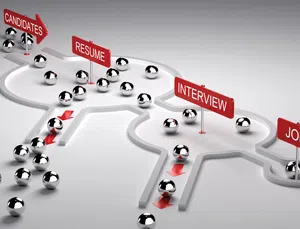We live in a world today full of information. Everyone has access to data. Our cell phones connect us to the internet, they can tell you where the closest McDonalds is located, who was the 20th president of the United States, the weather forecast, pay a bill or call for an Uber.
Amazon knows what we buy, Apple knows where we are, where we go and Facebook knows what we do. So what else is there? We’re one smart society.
Marketing strategies, product development, supply chain, logistics and all elements of business must be easier to manage.
Regarding human capital, this generation of employees and future leaders are the most educated group in history and the most diverse, with a digital tool kit prior generations could only dream about. So what could be missing?
Knowledge
All the information in the world does not translate into knowledge. I believe in the formula below. Pure information, raw data coupled with experience equals knowledge. Companies that can solve this equation will win in the market place.
INFORMATION + EXPERIENCE = KNOWLEDGE
Below are several ideas on engaging with and connecting your workforce (specifically, connecting the young with the experienced).
Onboarding. When new employees start, you should buddy them up with one of your experienced folks.
This relationship should be taken seriously — pick someone in your organization who has the knowledge and wants to share … someone who likes to teach.
This person should have a good understanding of your business and be able to articulate the strategies of the company.
The role of this buddy is to help get the new employee acclimated to your culture.
Formal training program. Create a training program that focuses on getting younger employees cross-functional experience. Take the time to do it right (use an apprentice-type approach).
Job assignments. Give your younger employees good work assignments. Instead of always giving the new folks the menial tasks, change this pattern. Load up their wagon and give them a bigger share of the workload.
Have an experienced person support them so they don’t fail, and watch their confidence grow.
Share networks. Millennials have a big social network and feel comfortable communicating this way.
Older generations connect face-to-face. Put a plan together that supports each group and helps each other grow their networks using each others tools. This is a must!
Mentoring. Establish a formal type of mentoring program for younger employees. Be selective on who becomes a mentor; take the time to train the mentors and make sure the mentees know what their role is as well.
Place metrics around this (don’t forget — what gets measured gets worked).
These ideas are some specific ways to get knowledge spread across your organization, but having a true open team environment is the best way.
Engaged work teams solve their problems, build trust, drive accountability to themselves and the team, learn flexibility, develop multi-tasking skills and value diversity of ideas and opinions.
Creating an open environment, having a culture of sharing and learning is key to success in a business today. This is the best way to connect the early career folks with your experienced people.





